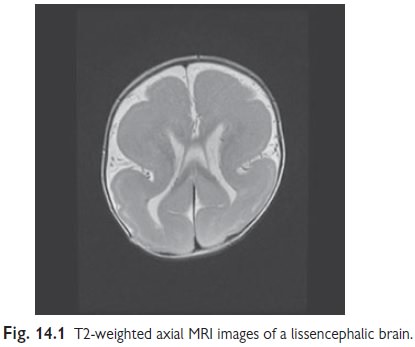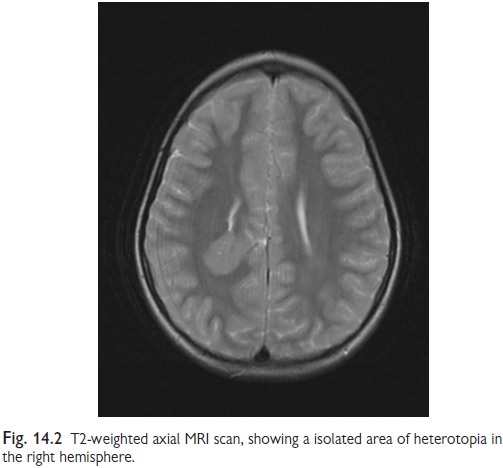Chapter: Paediatrics: Neurology
Paediatrics: Congenital abnormalities
Congenital abnormalities
There are many disorders that can
affect the brain. The majority are classed as disorders of neuronal migration
or cortical dysplasia and are thought to either be genetically programmed, due
to gene mutation, or a disruption of foetal development due to a deleterious
process between the 6th and 16th week of pregnancy, e.g. vascular or viral.
They are nor-mally associated with developmental delay, may have a cerebral
palsy, and can have very troublesome epilepsies.
Investigation
This is normally initiated after
an abnormality is licked up on standard MRI scan of the head. Unless the
disorder is likely to have been caused by a single process, e.g. mutation in
the Lis1 gene causing the majority of
children with isolated lissencephaly, then it is important to perform a full
examination and look for other stigmata of a genetic or acquired disorder. For
example, dysmorphic features, for the former, and stigmata of infec-tion for
the latter.
Most children will benefit from
exact radiological classification of the abnormality, and associated changes on
examination/history, then tar-geted genetic investigation. If this fails, then
karyotype and micro array analyses should be undertaken.
Lissencephaly ŌĆśsmooth brainŌĆÖ
There is absence of normal gyri on
the cerebral cortex (Fig. 14.1). The children may have unusual facial
appearance, difficulty swallowing, failure to thrive, seizures, and severe
learning disability. Hands, fingers, or toes may be deformed. It may be
associated with other diseases including, Miller-Dieker and Walker-Warburg
syndromes. Where multiple genes are deleted, e.g. Miller-Dieker, then wider
malformations are seen. In isolated lissencephaly, the majority will either
have a change within the Lis1 gene, or it is completely lost (Miller-Dieker).

Pachygyria
Here, there is a paucity of gyri
vs the absence in lissencephaly. Although milder, it is associated with a very
similar range of complications and man-agement is similar.
Heterotopia
In these disorders there is
abnormal positioning of the white/grey matter (Fig. 14.2). It is more commonly
used to describe abnormal migration of grey matter. It can be a single area,
multiple, nodular or a band. Milder than either of the above, many children
will be normal, or present later in life with events such as new onset
seizures.

Cortical dysplasias
These can occur as either a very
small or large lesion. Either can be associ-ated with learning difficulties,
and especially seizures. One in particular is very well recognizedŌĆöperisylvian polymicrogyriaŌĆöwhich is
associated with very troublesome seizures and bulbar difficulties. There is a
particular type of cerebral palsy which primarily affects the bulbar muscles
(unlike diple-gias, hemiplegias and quadripleagias, where bulbar signs are
normally much milder than those in the limbs. It is known as Worster-Drought syndrome.
Agenesis of the corpus callosum
Can occur as an isolated finding,
or in more widespread disorders, e.g. Aicardi Syndrome. It is isolated,
children may be almost normal, but as in other disorders there is a significant
chance of learning difficulties, and especially seizures.
Related Topics